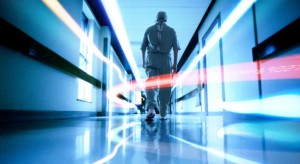Last week TripleTree spent two agenda-packed days at the annual WLSA Convergence Summit in San Diego. This venue has historically been a gathering place for early stage innovators seeking funding, and global firms curious about uncovering where wireless technologies and mobile features in healthcare can lead to meaningful innovation.
Last week TripleTree spent two agenda-packed days at the annual WLSA Convergence Summit in San Diego. This venue has historically been a gathering place for early stage innovators seeking funding, and global firms curious about uncovering where wireless technologies and mobile features in healthcare can lead to meaningful innovation. But as we opined on these pages 10 months ago, a turning of the tide has begun within the industry as it evolves from a niche area of healthcare technology – mobile healthcare or mHealth – to a more mainstream concept of “connected health”.
Since then, we’ve seen large and established healthcare leaders pluck the best ideas and IP from mHealth pioneers as Aetna began rolling out its own version of its connected health IT stack based loosely on the assets of its Healthagen acquisition; and in January athenahealth acquired Epocrates. Some quick observations from last week’s Convergence Summit include:
- The U.S. is leading the way in connected health. Historically, the U.S. has been a laggard in mobility behind the mobile operators in Europe and Asia, and consumer centricity of European mobile solutions (i.e. messaging, mobile payments, and more customized data plans). In a turnabout, the rest of the world is now looking to U.S. leadership in connected health and open to exploring the best ideas and companies, as noted by the increasing presence of overseas telcos and companies at the WLSA. The U.S. is leading the connected health revolution but there is plenty of opportunity for global solutions.
- Connected health companies are real, disruptive and getting noticed. The iAward Finalists for 2013 where an impressive lot, measured by factors that include clinical, operational or consumer relevance, size of addressable market, and demonstrated traction. Not only do the twelve finalists check those boxes, they are led by credible management team and have very cool approaches to solving healthcare problems.
- Connected health is empowering consumers and will improve the overall system: Health plan members and hospital patients are consumers…plain and simple. They are looking for solutions that range from self-management of chronic conditions, to caring for loved ones, to connectedness with their care provider. We’re watching with interest the recent news that an iPhone urinalysis app is garnering the first FDA inquiry of medical apps. Venture capital and strategic company enthusiasm for connected health innovation has been strong for three years, and we hope it will be supported by federal regulators and not hobbled by them. Connected health is no longer a niche industry but has mainstreamed how we interact with and benefit from the healthcare system.
Based on what we observed last week, our view is that mHealth is a term best suited for the rearview mirror, and Connected Health is spot on.
Let us know what you think.
Chris





